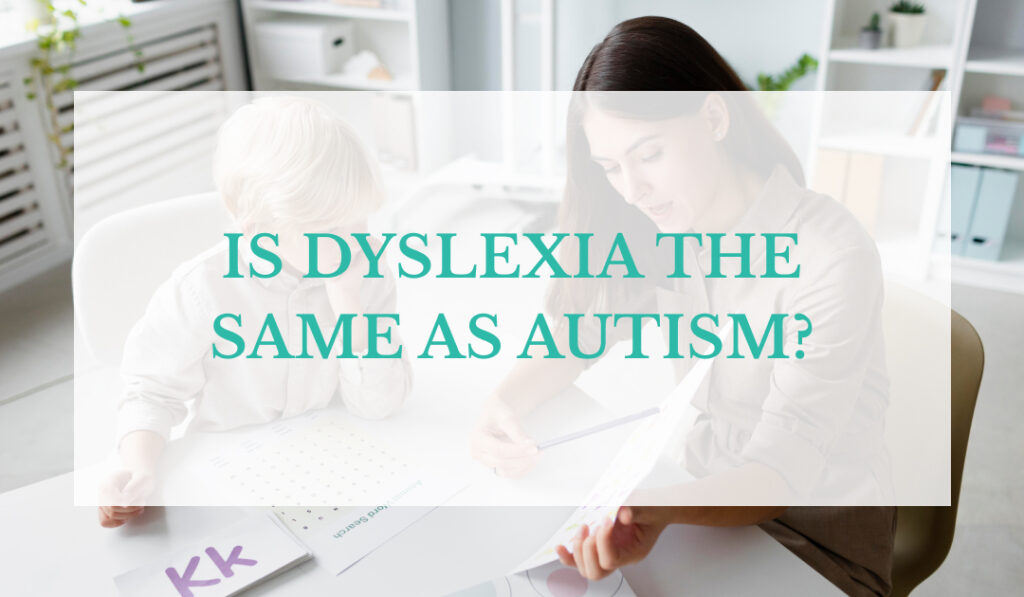Many times, people get confused between dyslexia and autism. They think that autism and dyslexia are the same. However, this is not true. Dyslexia and autism are two different conditions. Dyslexia is a learning disability that involves difficulty interpreting words, spelling, and pronunciation. On the other hand, autism is a developmental disorder where the brain sounds and colours in a different manner from an average brain. Through this blog post, you’ll come to know the difference between autism and dyslexia.
What are the Symptoms of Dyslexia?
The following are the most common symptoms of dyslexia:
- The child may have trouble with delayed speech.
- Students learn new words very slowly.
- They find it difficult to pronounce the sounds well.
- They mix up the letters that sound similar.
- They most often make spelling mistakes.
- They have trouble naming or remembering letters, colours, and numbers.
- They find it challenging to spell even simple words.
- They often make mistakes while reading and read very slowly.
If you identify these symptoms in your child, it is a clear indication that your child has dyslexia. However, a Toronto tutor can support dyslexic children improve their reading, writing and spelling skills.
What are the Symptoms of Autism?
The following are the most common warning signs of autism:
- The child will not make eye contact while talking.
- No babbling, cooing, or pointing to objects by one year of age.
- Autistic children like to play alone.
- They find it difficult to understand verbal and facial clues.
- Certain repetitive behaviours, such as twirling, head flapping, and flapping their hands.
Can Dyslexic Students Learn to Read, Write and Spell?
With the right support, children with dyslexia can learn to read, write and spell very well in school. Tutoring in Toronto by experienced tutors who follow Orton Gillingham’s approach can support dyslexic children in reading, writing and spelling.
The Orton Gillingham approach was designed to support struggling students learning to read, spell and write. Orton Gillingham’s approach offers numerous benefits to support dyslexic students. Here are some ways that the Orton Gillingham approach supports students with dyslexia:
- The Orton Gillingham tutor starts with identifying underlying literacy issues of dyslexia children to create a personalized lesson plan. By addressing the gaps in skill development, tutors can support children develop foundational literacy skills.
- The Orton Gillingham approach is individualized to each dyslexic child’s abilities and requirements. Each lesson focuses on skill development.
- In the Orton Gillingham approach, tutors work closely with students one-on-one to develop skills in a highly structured manner that streamlines language for mastery. Tutors introduce skills starting from the most basic and moving further to more complex. If any student needs revision, the tutor recalls the previous lessons.
- The Orton Gillingham approach is multisensory in nature and uses the learning senses of visual, kinesthetic, auditory and tactile. This is used to teach and revise lesson material, leading to greater skill retention.
Children with dyslexia require a lot of support and motivation. Our reading and spelling techniques provide guidance every step of the way. We teach the phonics, rules, and strategies necessary for students to become proficient readers and spellers for life. Therefore, it would be worth receiving support from experienced tutors who support dyslexic students.
Our programs use a multisensory approach to provide instruction through sight, sound, and touch in a logical and incremental manner. The explicit, step-by-step lessons are customizable, with plenty of review to ensure that the child’s learning is solidified. Therefore, it makes sense to reach out to our tutors at Class in Session for your dyslexic child.
